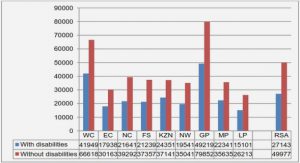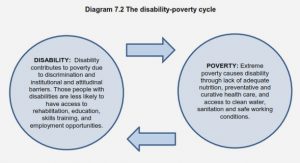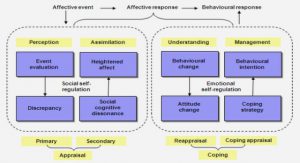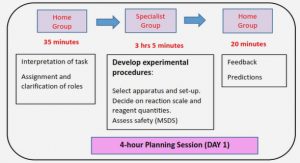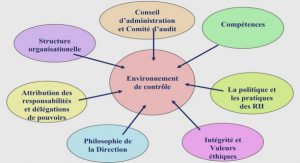Get Complete Project Material File(s) Now! »
Experimental apparatus for dynamic measurement of elastic moduli and Poisson’s ratio over frequencies
The chapter introduces two apparatus used in my experiments. They are installed in the lab of CUPB (Beijing) and ENS(Paris).
The first part of the paper demonstrates the components and work principle of the apparatus of Beijing. Two benchmark sample-aluminum and plexiglass-were measured to calibrate the apparatus. The result shows the amplitude of the strain in the range of 10-8-10-6. The Young’s modulus and Poisson’s ratio measured are in agreement with the preset values of the benchmarks. However, several anomalies appeared above 200 Hz, which put limitations on the range of measurement frequency and jeopardize the credibility of the measurement results over a broad frequency band. To figure out the reasons, we investigated these anomalous strains by numerical model simulations with a finite element method based on the experimental apparatus. Through systematic analysis of the modeling results, we conclude that the resonances caused by non-axial perturbation lead to such anomalous measurement results. Based on the analysis, we give a solution to reduce the effect of the resonances and shift the first resonance frequency beyond the frequency band of 1-2000 Hz. The enhanced measurement system can provide robust and reliable measurements on the elastic parameters of rocks between 1 and 2000 Hz, which is crucial for a quantitative study of frequency-dependent phenomenon related to fluid effects. This in turn will provide a powerful tool for experimental characterization of elastic properties of oil/gas reservoir rocks, thus laying solid foundation for low-frequency rock physics analysis and quantitative seismic interpretation.
The second part of the chapter presents an experimental apparatus installed in the geology lab of ENS (Paris), which is designed for the investigation of the frequency dispersion, and related attenuation, of fluid-saturated rocks under confining pressure and undrained boundary conditions. The forced-oscillation (stress-strain) method is performed on cylindrical samples with the diameter of 40mm and length of around 80mm. The measurement of stress and strain under hydrostatic oscillations allows the dynamic bulk modulus to be inferred, while axial oscillations give access to the dynamic Young’s modulus and Poisson’s ratio. Calibration measurements for dispersion and attenuation on standard materials such as glass, plexiglass and gypsum were present. Results show that for strain amplitudes below 10-5, robust measurements can be achieved up to 1 kHz and 1.3 Hz, respectively for axial and hydrostatic oscillations. A new experimental design of the end-platens (sample holders) allows control of drained or undrained boundary conditions using microvalves. The microvalves were tested on a porous Vosgian sandstone. In addition, numerical modelling confirms that the resonances of the apparatus only affect frequencies above 1 kHz, with little sensitivity to the sample’s stiffness. The apparatus presented in this part is able to measure the complex bulk modulus up to 1 Hz, and Young’s modulus and Poisson’s ratio up to 1 kHz using forced-oscillation methods, under either drained or undrained boundary conditions, and for temperatures between 20 and 100°C. The frequencies of the viscous-driven WIFF (such as squirt-flow) for a water-saturated rock may be shifted to lower frequencies with the use of more viscous pore fluids, such as glycerin (Batzle et al., 2006b). This enables us to extend the “apparent frequency” range of the apparatus (Borgomano et al., 2017).
The chapter is made of two published articles which have been published in the journal of Review of Scientific Instruments:
Sun, C., Tang, G., Zhao, J., Zhao, L., and Wang, S., “An enhanced broad-frequency-band apparatus for dynamic measurement of elastic moduli and Poisson’s ratio of rock samples,” Review of Scientific Instruments, American Institute of Physics, 2018
J. Borgomano, A. Gallagher, C. Sun, J. Fortin. An apparatus to measure elastic dispersion and attenuation using hydrostatic and axial-stress oscillations under undrained conditions. Review of Scientific Instruments, American Institute of Physics, 2020
Following are the two papers.
Experimental setup installed in Beijing
Paper <<An enhanced broad-frequency-band apparatus for dynamic measurement of elastic moduli and Poisson’s ratio of rock samples>> Review of Scientific Instruments, American Institute of Physics, 2018
Starts from here
An enhanced broad-frequency-band apparatus for dynamic measurement of elastic moduli and Poisson’s ratio of rock samples
Abstract: We built a broad-frequency-band measurement system for rock elastic parameters based on the stress-strain method following Batzle et al. (2006). The system gives strain amplitude anomalies at some measurement frequencies. These anomalies put limitations on the range of measurement frequency and jeopardize the credibility of the measurement results over a broad frequency band. To overcome these limitations, we investigated the cause of these anomalous strains by numerical model simulations with a finite element method based on the experimental apparatus. Through systematic analysis of the modeling results, we conclude that the resonances caused by non-axial perturbation lead to such anomalous measurement results. Based on the analysis, we give a solution to reduce the effect of the resonances and shift the first resonance frequency beyond the frequency band of 1-2000 Hz. The enhanced measurement system can provide robust and reliable measurements on the elastic parameters of rocks between 1 and 2000 Hz, which is crucial for a quantitative study of frequency-dependent phenomenon related to fluid effects. This in turn will provide a powerful tool for experimental characterization of elastic properties of oil/gas reservoir rocks, thus laying solid foundation for low-frequency rock physics analysis and quantitative seismic interpretation.
Keywords: low-frequency apparatus, broad-frequency-band, numerical simulation, resonance analysis
Experimental setup installed in Beijing
Introduction
Direct measurements on the sedimentary rocks in the seismic to sonic frequency range in the laboratory are of great importance for understanding their physical properties and responses to elastic waves (Wang et al., 2012). Conventional laboratory measurements use the ultrasonic transmission technique to obtain wave velocities for rock samples a few centimeters long (Schmitt, 2015). The frequency band of these ultrasonic measurements resides in the range of 105-106 Hz, in contrast to 101-102 Hz for seismic methods, and 103-104 Hz for sonic logging. Obviously, there is a great frequency gap between the ultrasonic measurement in the laboratory and seismic and sonic measurements in the field. There may exist significant discrepancies in the wave velocities and attenuation for saturated rocks across these frequency bands, which can be attributed to dispersion effects caused by wave-induced fluid flow (Biot, 1956a, 1956b; E White, 1983; Winkler, 1985; Bourbie et al., 1992; Sams et al., 1997; Pride et al., 2004; Pride, 2005; Müller et al., 2010). To investigate the velocity dispersion and attenuation of seismic waves over a broad frequency band, low-frequency apparatus, and techniques, in addition to the ultrasonic technique, have been developed over the years.
The low-frequency measurement techniques include the resonant bar method (Born, 1941; Gordon R. B. and Davis L. A., 2012; McCann and Sothcott, 2009; Winkler and Nur, 1979a), the differential acoustical resonance spectroscopy (DARS) method (Harris et al., 2005; Wang et al., 2012; Zhao et al., 2013, 2015) and the stress-strain method (Adelinet et al., 2010a; Batzle et al., 2006a; Chapman et al., 2016; David et al., 2013a; Fortin et al., 2014; Jackson and Paterson, 1987; Madonna and Tisato, 2013a; Mikhaltsevitch et al., 2011a; Nakagawa, 2013; Spencer, 1981a; Subramaniyan et al., 2014; Szewczyk et al., 2016a; Tisato and Madonna, 2012a; Wang et al., 2017). For the resonant bar method, the rock sample is made into a bar and excited by the use of the piezoelectric, static and electromagnetic force (Winkler and Nur, 1979a), which causes it to vibrate in one of its normal modes such as the torsional, extensional or flexural resonance mode. One advantage of this method is that it can be applied for measurements in a rather broad, but discontinuous frequency range depending on the length of the sample (Cadoret et al., 1995; McCann and Sothcott, 2009). The drawback, however, is that the sample has to be sufficiently long for low-frequency measurements (Subramaniyan et al., 2014). Thus, a continuous measurement in a broad frequency range for a single rock sample is difficult and inefficient. The DARS method is an approach somewhat similar to the resonant bar technique (Harris et al., 2005; Wang et al., 2012; Zhao et al., 2013, 2015), which is based on measuring the shift in the resonant frequencies of a cavity perturbed by the introduction of a small object (Harris et al., 2005). The DARS method is used for estimation of the compressibility and density of different samples, especially irregular-shaped samples. However, the frequency points utilized in this method are derived from the resonances of the measurement system, thus causing a limitation on the number of frequencies available. These two methods utilize the resonance modes of the equipment to obtain the elastic properties of rock samples, thus avoiding the adverse effects of the resonances on mechanical measurements.
Nonetheless, these measurements at discrete frequencies leave out much information which can be otherwise obtained in a continuous frequency range.
On the other hand, the stress-strain method is used to obtain the elastic moduli and attenuation of the rock sample by recording the amplitude and phase of the loading stress and the axial and radial strains. The experiment keeps a quasi-static process during the stress loading and unloading on the rock samples. The Young’s modulus is calculated by the division of the amplitudes of the stress and the axial strain, whereas the attenuation (i.e. Q-1) is approximated by the phase shift between the axial stress and the axial strain (Batzle et al., 2006a; Madonna and Tisato, 2013a; Mikhaltsevitch et al., 2014; Tisato and Madonna, 2012a). However, many low-frequency apparatuses based on the stress-strain method face a serious challenge. When the measurement frequencies are greater than 200-400 Hz, the strain measurements and the resulting elastic moduli are no longer available (Lienert and Manghnani, 1990; Madonna and Tisato, 2013a; Mikhaltsevitch et al., 2014; Paffenholz and Burkhardt, 1989a; Pimienta et al., 2015a; Spencer, 1981a; Tisato and Madonna, 2012a). To cope with this challenge, Batzle et al. (2005, 2006, 2014) optimized the low-frequency apparatus for the stress-strain measurement and implemented a broader frequency band (2-2000Hz), making a significant contribution to the low-frequency techniques. However, their measurement results from the broad-band experiments sometimes displays unreasonable large values at certain frequencies (e.g. 120 Hz, 1500 Hz) that exceed the dispersion trend (Batzle et al., 2006, 2014; Kumar, 2003). The elastic properties measured at these frequencies are considered unreliable and thus difficult to interpret. This problem puts limitations on the useful frequency range and the credibility of the data points contaminated by these anomalies, which are believed to be related to the resonances of the measurement apparatus; nonetheless, the resonance frequencies are claimed to be above 2500 Hz without any further explanation (Batzle et al., 2016). However, this claimed resonant frequency is very different from the actual ones observed in the experiments. Therefore, the cause of these anomalous measurements using the stress-strain method is still lack of thorough investigation. To this end, we provide a systematic investigation on the adverse effect of the resonances of the broad-band measurement system by numerical simulations. By analyzing how the resonance affects the measurement of the Young’s modulus and Poisson’s ratio, we find that several resonance modes below 2000 Hz can disturb the measurement results, despite their usefulness in the resonant bar technique and the DARS method. This finding and detailed analysis on the influencing factors leads to a solution to the resonance problem and therefore, the accuracy and the stability of the stress-strain measurements can be significantly improved within a broad frequency range of 1-2000 Hz.
Description and Analysis of Experimental Setup
We built a broad-frequency-band measurement system to measure the elastic moduli and attenuation of rock samples at a frequency range of 1-2000 Hz, following the setup of Batzle et al. (2006). This measurement system is implemented based on the stress-strain method, using a sinusoidal axial stress to generate the axial and radial strains of the reference sample and the test sample, which are measured by semi-conductor strain gauges bonded directly to their surface. Figure 2.1 shows a sketch of the main units of the low-frequency apparatus, including
(1) a function generator, which produces a sinusoidal signal to excite the electromagnetic shaker; (2) a source signal amplifier for amplifying the signal from the function generator; (3) an electromagnetic shaker (Brüel&Kjær, type 4810) for stress output; (4) radial strain gauges for strain measurements; (5) axial strain gauges; (6) a Wheatstone bridge for weak strain signal output (Kumar, 2003); (7) a strain signal amplifier for amplification of the strain signals; (8) an analog-digital converter for the conversion of continuous analog-signals to discrete digital-signals; (9) a signal processing unit; (10) a high-pressure and high-temperature vessel to contain the sample assembly for stress-strain measurements; (11) a pressure and temperature control unit; (12) a fluid pipeline for fluid inflow and outflow.
In the preparation for the measurement, the test sample and the reference sample are bonded together and align vertically along their axis, so that the stress can be homogeneously distributed both laterally and in the axial direction. When a sinusoidal stress at a given frequency is applied on the test sample, the axial and radial strains are measured by the strain gauges and recorded by the computer. Then, the Young’s modulus is calculated by = ⋅ (2.1) where is the Young’s modulus of the reference sample (aluminum), is the amplitude of its axial strain, and is the amplitude of the axial strain of the test sample. Additionally, the Poisson’s ratio is calculated by = − (2.2) where is the amplitude of the radial strain of the test sample. As an example, Figure 2.3 shows three output strain signals from the processing unit (Unit 10 in Figure 2.1), illustrating the axial and radial strains of a homogeneous sandstone sample with a Young’s modulus of 26 GPa and a Poisson’s ratio of 0.18, and the axial strain of the reference sample, respectively. The strain signals are averaged over a number of cycles depending on the measurement frequency. The physical strain is calculated by the formula = . (1− 10−6) is the output from the unbalanced bridge (unit 6), and is the supply voltage (12 V). F is the gauge factor (~155). A is the amplifier coefficient (1000). Then the physical strain is actually on the order of 10-8-10-7. Commonly, two pairs of strain gauges are used and we average them as the final measurement results. We observe that there is little phase difference between the axial strains of the test sample and the reference sample. The phase difference between the radial strain and the axial strain of the test sample is π because their phases are reversed. Noticeably, the radial strain has the lowest signal/noise ratio due to its relatively low amplitude compared to the other two strains, considering a nearly constant noise level.
Because the elastic properties of the standard aluminum are considered frequency independent, we often use it both as a reference sample and a test sample to calibrate the measurement system. Figure 2.4(a) and Figure 2.4(b) shows the axial strains of the aluminum standard and an aluminum test sample, respectively. We calculated the Young’s modulus with equation (2.1) and the Poisson’s ratio with equation (2.2) for this sample using the strain amplitudes. Figure 2.4(c) and Figure 2.4(d) present the calculation result of the Young’s modulus and the Poisson’s ratio at a frequency range of 6-2000 Hz. Noticeably, the Young’s modulus varies little with the frequency up to 219.3 Hz and then the data points deviate at higher frequencies (e.g. 289.1Hz, 381.1Hz, 662.3Hz, 1151Hz and 1517Hz). These anomalous data points gravely deviate from the elastic moduli measured by the ultrasonic method (Young’s modulus ~68GPa and Poisson’s ratio 0.33) and contaminate the Young’s modulus result in an otherwise much broader frequency band, giving rise to a grave problem in the analysis of frequency-dependent elastic properties. Therefore, the nature of these anomalous measurements is worth further investigation with the purpose of avoiding or overcoming this problem.
Numerical Simulation and Resonance Analysis
We investigated the cause of the anomalous measurements at higher frequencies by numerical simulations of the real experiment apparatus and its operation process. It is reasonable to believe that the results measured at a range of frequencies may be contaminated by the intrinsic resonances of the measurement system. To understand the influence of the resonances, we used commercial finite element software, COMSOL, to simulate the stress-strain state of a sample during the sinusoidal stress loading. Specifically, we created a model for the main apparatus and simulated the physical process of the real measurements and recorded the strains of the reference sample and the test sample, using all possible known parameters of the real measurement system. The sandstone sample mentioned previously was again used as the test sample in the numerical simulations. The main working parts of the apparatus for the simulation are the units in the vessel (see Figure 2.1). Figure 4(a) shows the real set-up of these units, and Figure 2.5(b) shows the vessel accommodating all these units. The shaker (not shown in Figure 4a) generates a sinusoidal stress which is loaded onto the standard aluminum sample through the source platform. The strains are recorded by the strain gauges bonded on the aluminum standard and the sandstone sample. Then, the Young’s modulus and the Poisson’s ratio are obtained according to Equations 2.1-2.2. The supporting rods are used to connect the shaker housing and the vessel head, providing vertical alignment and bonding of these parts. Figure 2.5(c) shows the numerical model of the working units in the vessel, which were created in COMSOL with the parameters listed in Table 1. The vessel provides a fixed boundary condition, simulated by the fixed boundary at Position 1 in Figure 2.5(c). Originally, all the rest surfaces below Position 1 were left as free surfaces in the real experiment configuration following Batzle et al. (2006). The loading stress from Surface A was applied on the sample by the source platform as indicated by the red arrow in Figure 2.5c. At the contacts between the samples and the platforms, we used continuous stresses and displacements as boundary conditions (Figure 2.5c); therefore, the relative lateral displacements are not allowed at these contacts. These boundary conditions are physically implemented using hard bonding with epoxy (Figure 2.5a). Figure 2.5(d) shows the finite element meshing of the numerical model created in COMSOL.
The stress-strain state of the test sample is given by the following equations, including the displacement-stress equation, the constitutional equation, and the boundary condition equations.
Table of contents :
Introduction
Chapter 1 Propagation of Elastic waves in elastic isotropic media
1.1 Elastic moduli
1.2 Effective pressure
1.3 Elastic waves velocities
1.4 Static and dynamic moduli
1.5 Effective elastic media: bounds and mixing laws
1.5.1 Hashin–Shtrikman bounds
1.5.2 Voigt and Reuss bounds
1.5.3 Mixing laws
1.6 Dispersion and attenuation
1.6.1 Definition
1.6.2 The dispersion and attenuation related to WIFF mechanism
1.6.3 Theory classically used to interpret lab measurements for a fully saturated rock: the drained/undrained transition
1.6.4 Theory classically used to interpret lab measurements: the undrained/unrelaxed transition
1.6.5 Theory for a partially saturated sample
1.7 Experimental investigation
1.7.1 Experimental techniques
1.7.2 Previous measurements
Chapter 2 Experimental apparatus for dynamic measurement of elastic moduli and Poisson’s ratio over frequencies
2.1 Summary
2.2 Experimental setup installed in Beijing
2.2.1 Introduction
2.2.2 Description and Analysis of Experimental Setup
2.2.3 Numerical Simulation and Resonance Analysis
2.2.4 Experimental Verification
2.2.5 Error and Limitation
2.2.6 Conclusion
2.3 Experimental setup installed in Paris
2.3.1 Abstract
2.3.2 Introduction
2.3.3 Pressure vessel
2.3.4 Methodology
2.3.5 Generation of stress oscillations and strain measurements
2.3.6 Protocol
2.3.7 Calibration of dispersion and attenuation
2.3.8 Controlling the undrained boundary conditions
2.3.9 Numerical investigation of resonant frequencies
2.3.10 Applications
2.3.11 Conclusion
Chapter 3 Global drainage flow /drained-undrained transition caused by the boundary
3.1 Summary
3.2 Abstract
3.3 Introduction
3.4 Poroelastic model
3.4.1 One-dimensional model
3.4.2 Three-dimensional model
3.4.3 Local versus Global predictions for bulk modulus and attenuation
3.5 Numerical solutions
3.5.1 Experimentally drained boundary conditions
3.5.2 Experimentally undrained boundary conditions
3.6 Discussion
3.6.1 Comparison with the measurements
3.6.2 The effect of permeability
3.6.3 The effect of fluid viscosity
3.6.4 The effect of drained bulk modulus and fluid bulk modulus
3.7 Conclusion
Chapter 4 Dispersion and attenuation of elastic wave velocities: impact of microstructure heterogeneity and local measurements
4.1 Summary
4.2 Abstract
4.3 Introduction
4.4 Experiments and measurements
4.5 Stress-strain apparatus
4.6 Fluid and sample
4.7 Sample saturation
4.8 Results and analysis
4.9 Conclusion
4.10 Acknowledgments
4.11 Support Information I
4.11.1 Text S1.
4.11.2 Text S2.
4.11.3 Text S3.
Chapter 5 Effect of pore collapse and grain crushing on the frequency dependence of elastic wave velocities in a porous sandstone
5.1 Summary
5.2 Abstract
5.3 Declarations
5.4 Introduction
5.5 Sample and laboratory experiment
5.5.1 Sample and fluids
5.5.2 Laboratory apparatus and measurement
5.6 Porosity versus effective pressure during hydrostatic loading
5.7 Results and analysis
5.8 Discussion
5.8.1 Evolution of the aspect ratio during the compaction
5.8.2 Effects on the dispersion
5.9 Conclusion
5.10 Appendix 1
Chapter 6 Fluid distribution effect on seismic attenuation in partially saturated limestone
6.1 Summary
6.2 Introduction
6.3 Sample description
6.4 Saturation process
6.4.1 Pseudo-imbibition
6.4.2 Drainage
6.5 CT scanning
6.6 Methodology
6.6.1 Experiment apparatus
6.6.2 Dispersion and attenuation measurement
6.7 Results and analysis
6.7.1 Imbibition
6.7.2 Drainage
6.7.3 Comparison of the bulk modulus using two imbibition and drainage technique
6.7.4 Fluid distribution
6.7.5 Theoretical considerations based on WIFF
6.8 Conclusion
Chapter 7 Conclusions and Perspectives
7.1 Conclusion
7.2 Perspectives
Reference

